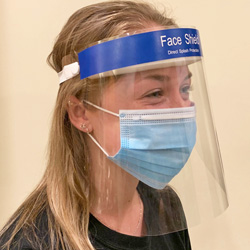> In an emergency, a flash drive and a laptop can provide easy access to the files without internet service.
I'm not entirely clear what the purpose of an SDS in an emergency situation is. In training, I say that after the fire starts or the chemical spills is too late to review the SDS. The most important thing in such situations is having a reliable identification of the chemicals involved. If the SDS collection includes sucrose and sodium chloride, the collection could be a problem as much as a help in this respect. This approach is based on the assumption that the first responders have Internet access, which may not always be the case; I don't know if paper solves this problem, since the paper SDS in the lab may not be accessible in emergencies.
That said, I know that providing an SDS when the chemical involved is well-identified to response personnel can be very helpful in terms of providing clear identification of the chemicals involved and a level of assurance that everyone's talking about the same chemical. Along those lines, I did an HF training for a lab group recently and one of the tips I found in the literature was in case of an exposure to call the material involved HF rather than "hydrofluoric acid" to avoid responders hearing "hydrochloric acid" which is a more familiar phrase. I thought that was a helpful tip to pass along to the group I was talking to.
- Ralph
Ralph Stuart CIH
Chemical Hygiene Officer
Department of Environmental Health and Safety
Cornell University
rstuart**At_Symbol_Here**cornell.edu
Previous post | Top of Page | Next post
